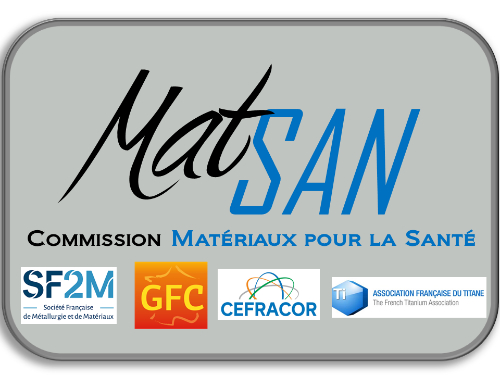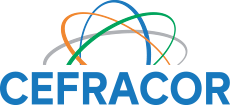
Healthcare materials

Due to the increase of life expectancy, different materials and devices used in the biomedical domain must be rethought for long term implantations, from a biological, chemical and mechanical perspective. Furthermore, research is oriented towards more efficient biomaterials with multiple functionalities.
Hence, the appropriate responses should address increasingly optimized materials that have to be designed for specific applications: carrier of drugs and active substances, biomaterials to consolidate or replace parts of organs and defective tissues (various medical devices, implants, prostheses…), implanted electrodes, nanoparticles for medical imaging or cell therapy, diagnostic supports and targeting (biochips).
All categories of materials are used for healthcare: ceramics, metal alloys, polymers, composites, materials of natural origin; in the form of massive pieces (dense or porous), or deposits, injectable formulations, or micro/nanoparticles, or even other pharmaceutical forms. These materials in contact with the body must be biocompatible and sometimes bioactive and/or bio-resorbable.
The techniques of synthesis, processing and characterization of these materials are multiple. In order to optimize them, it is necessary to understand and use the pathological destruction processes, the interaction between the materials and the hosting biological tissues and to control their degradation in vivo.
Context:
The MatSan (Healthcare Materials) Commission is a mixed commission to 4 national scholar societies (SF2M, GFC, CEFRACOR, Titane association). It gathers academic, industrial and clinical researchers interested in “healthcare materials” aspects in order to identify the main actors and to assemble a community identified as materials for health. Here, the biomaterial is at the heart of our concerns, whatever its nature: ceramic, metallic, polymer or composite. The Commission regroups physico-chemists, materials scientists, pharmacists, clinicians, etc., and is therefore complementary to other “more biologically” oriented national structures. Clinicians and biologists, are nontheless, equally present and participate actively to identify the main biomaterial issues, the main questionings, and evaluate the current approaches.
A particular attention is given to the elaboration of biomaterials and their precursors, their fine physico-chemical characterization, their processing (dense or porous matrices, films or coatings, injectable paste, additive manufacturing, particles/suspensions…) and the evaluation of their properties (chemical, mechanical, durability/wear and tear, biological) close to their conditions of use.
Objectives:
The Commission aims to:
- Gather the community “Materials for health” to the (French) national level. It however also welcomes French-speaking foreign researchers.
- Allow regular and constructive discussions, mainly at the JA (Journées Annuelles - Annual Meeting) between scholars, industrials, and clinicians in the healthcare field.
- Increase the visibility of the community with respect to industrials and international partners.
- Be an identified major actor for the organization of different events (e.g. Implication in the organization of the conference “Materials for healthcare” of the cycle of “MATERIAUX (MATERIALS)” conferences.
Purpose:
The mixed Commission MatSan’s main purpose is the development and study of biomaterials (ceramic, metallic, polymer, composite…). It gathers the main actors in the field, complementing other structures focused on “biological” aspects. It involves academic researchers, industrials and clinicians and organizes regular scientific meetings, in particular since 2015 in the form of Annual Meetings (Journées Annuelles -JA)
Subject:
Around the topic of “Materials for health », the MatSan Commission is particularly active around the issues regarding biomaterial synthesis, their characterization, their processing, and the evaluation of their properties (chemical, mechanical, durability/wear and tear, biological, thermodynamic…) Several biomaterials are furthermore associated with ions or active molecules and/or require surface engineering/specific functionalization, which are an integral part of MatSan’s activities.
News:
Past activities :
Journées Annuelles (Annual Meetings): unique events which allow the “healthcare materials” French community to meet and exchange information. Each year the MatSan Commission organizes an Annual Meeting which allows especially young researchers (graduate students, postdocs…) particularly, to present their work and meet the French community “materials for health” and the experts in the field (scholars, clinicians, industrials…). These events are supported, alternately, by the constituting scholar societies associated to this mixed commission (SF2M, GFC, CEFRACOR, Titane association). Awards for best oral and poster presentations are discerned every year.
Past editions of MatSan Annual Meetings:
- JA2015 – Location : Paris – Main Organizer : J. Chevalier (Lyon)
- JA2016 – Location: Limoges – Main Organizer : E. Champion (Limoges)
- JA2017 (joint with Biomat) – Location: Ambleteuse – Main Organizer : E. Brès (Lille)
- JA2018 – Location : St Etienne – Main Organizer : N. Douard (St Etienne)
- JA2019 (joint with Biomat) – Location: La Grande Motte – Main Organizer : C. Drouet (Toulouse)
Other actions:
The members of the MatSan Commission are regularly requested to take part in the organization of scientific events, for example the organization of the “Materials / Healthcare” symposium of the MATERIAUX (MATERIALS) national series of conferences.
For more information please contact:
- The president: Christophe Drouet (CIRIMAT, Toulouse)
- The vice-president: Ana Maria Sfarghiu (LaMCoS, Lyon)

